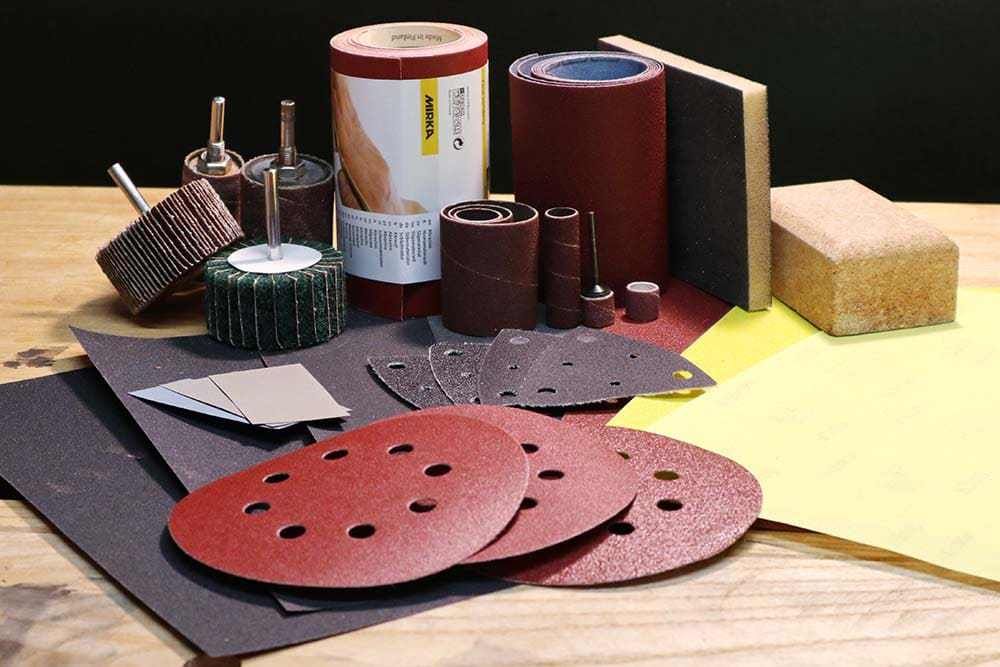Two processes are involved in the production of coated abrasives: manufacture and finishing. The manufacturing process is a continuous operation that comprises the application of adhesives, their polymerization and the application of abrasive grains on the backing. This last operation is performed by one of two systems: one electrostatic and the other by gravity.
In the first, the abrasive grains are passed into an electrostatic field where they become charged one end of each grain becoming positive and the other negative. A negative electrode used creating the electrostatic field attracts the positive end of the grain particle and repels the negative end. Thus the grain is turned and applied in an upright position on the backing resulting in a uniform sharp and aggressive abrasive surface.
In the gravity system, the abrasive grains fall in a controlled manner on the adhesive coated backing. The material thus processed can be coated according to the application needs, in a closed or open coat.
In the first case, the particles cover totally the surface of the backing and their use is adequate for severe operation and for most applications. Most coated abrasives have this type of coating.
In the second case, each abrasive particle is spaced at given distances, covering from 50% to 70% of the surface. This coating loads less readily being effective in operations where the sanded material tends to clog the coating, for instance: solder, paint, varnish and woodworking.
As a result of the manufacturing process large size rolls of different widths called Jumbos are obtained, on which the finishing process begins. These Jumbos are dried or cured and conditioned to the proper moisture contained for future processing into the form required. The rolls are stored and then cut to its final form such as: Sheets, Discs, Rolls, Belts, PSA Paper Discs, Flap Wheels and Specialties.
FLEXING
The flexing of a coated abrasive consists of a controlled fracture of the continuous adhesive-abrasive coating at a certain angle and direction in order to obtain the degree of flexibility required for every application and improve the performance of the coated abrasive.
There are basically three varieties of this operation: flexing, bi-flexing and full-flexing.
In flexing, fracture lines of the material are perpendicular in relation to the edge of the material, forming a 90-degree angle, which provides certain flexibility in the lengthwise direction.
In bi-flexing, there are two flexing lines at 45 degrees, each in relation to the edge of the material, providing intermediate flexibility, that is, both crosswise and lengthwise.
Full-flexing is a combination of the two above, that is, two flexing lines at 45 degree and one at 90 degree in relation to the edge of the material. The result is a more flexible material, both lengthwise and crosswise.
ABRASIVE BELT JOINTS
The basic joins are either “butted” together or “lapped”.
Lap Joins
In such a join the abrasive grain is skived from end of the piece and the other end is lapped and glued on to this skived section. Such a join should only run in direction indicated.
Butt Joins
“Butt splice”, in which belt ends are butted together and joined by high strength tape on underside of joint. Allows belt to run in either direction for greater belt life and convenience. Smooth running. Most popular splice suitable for a wide variety of applications and belt sizes.

